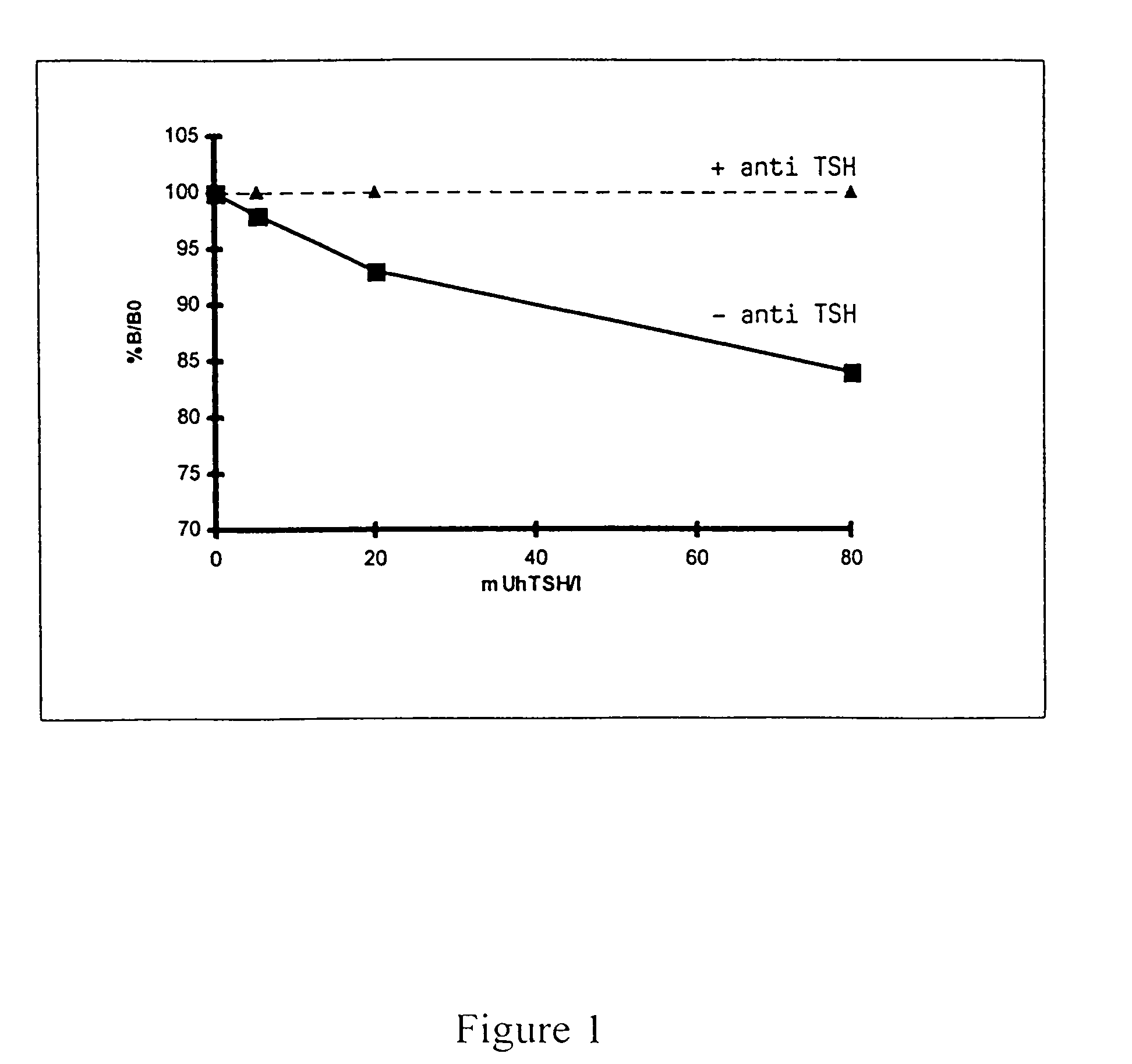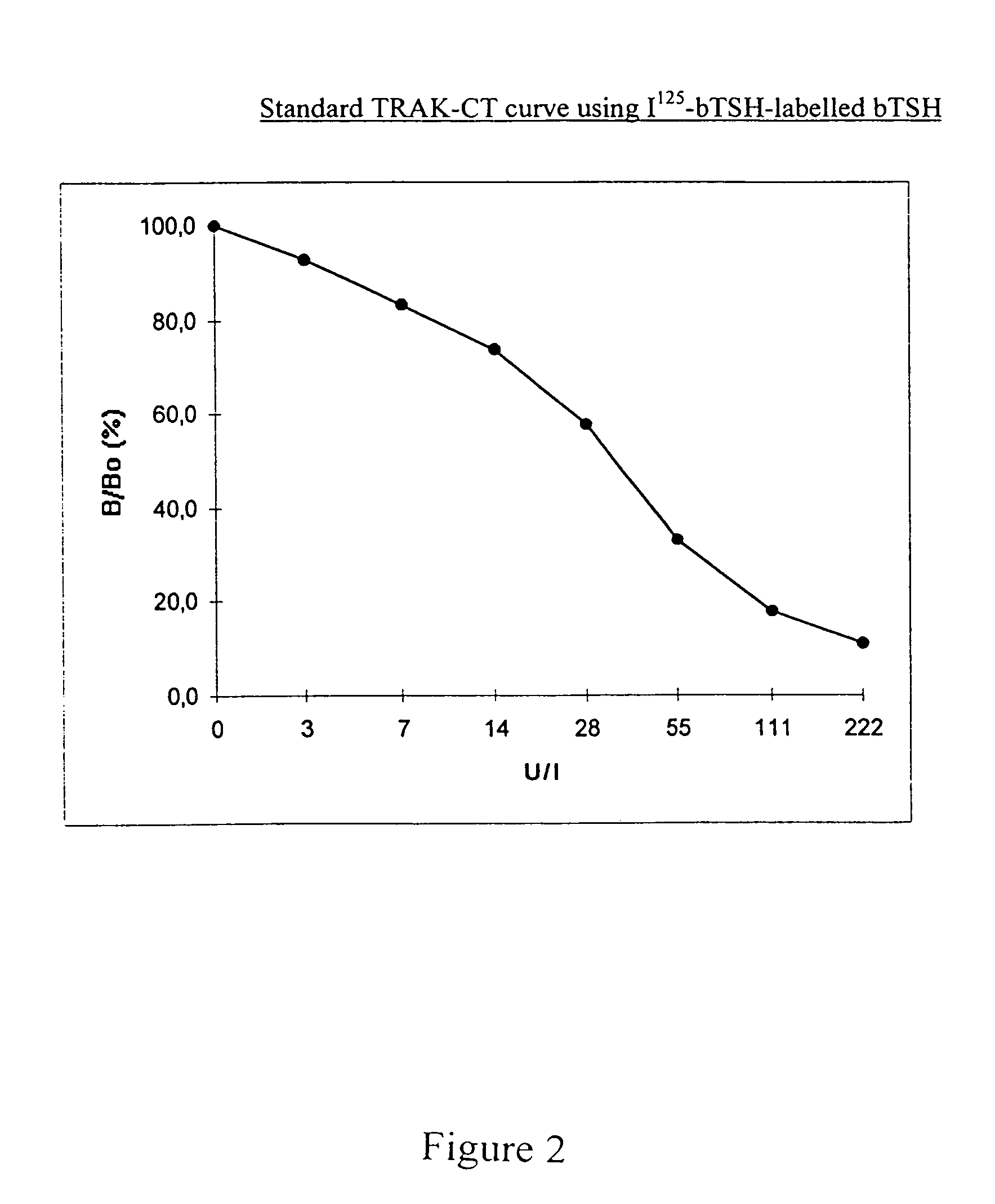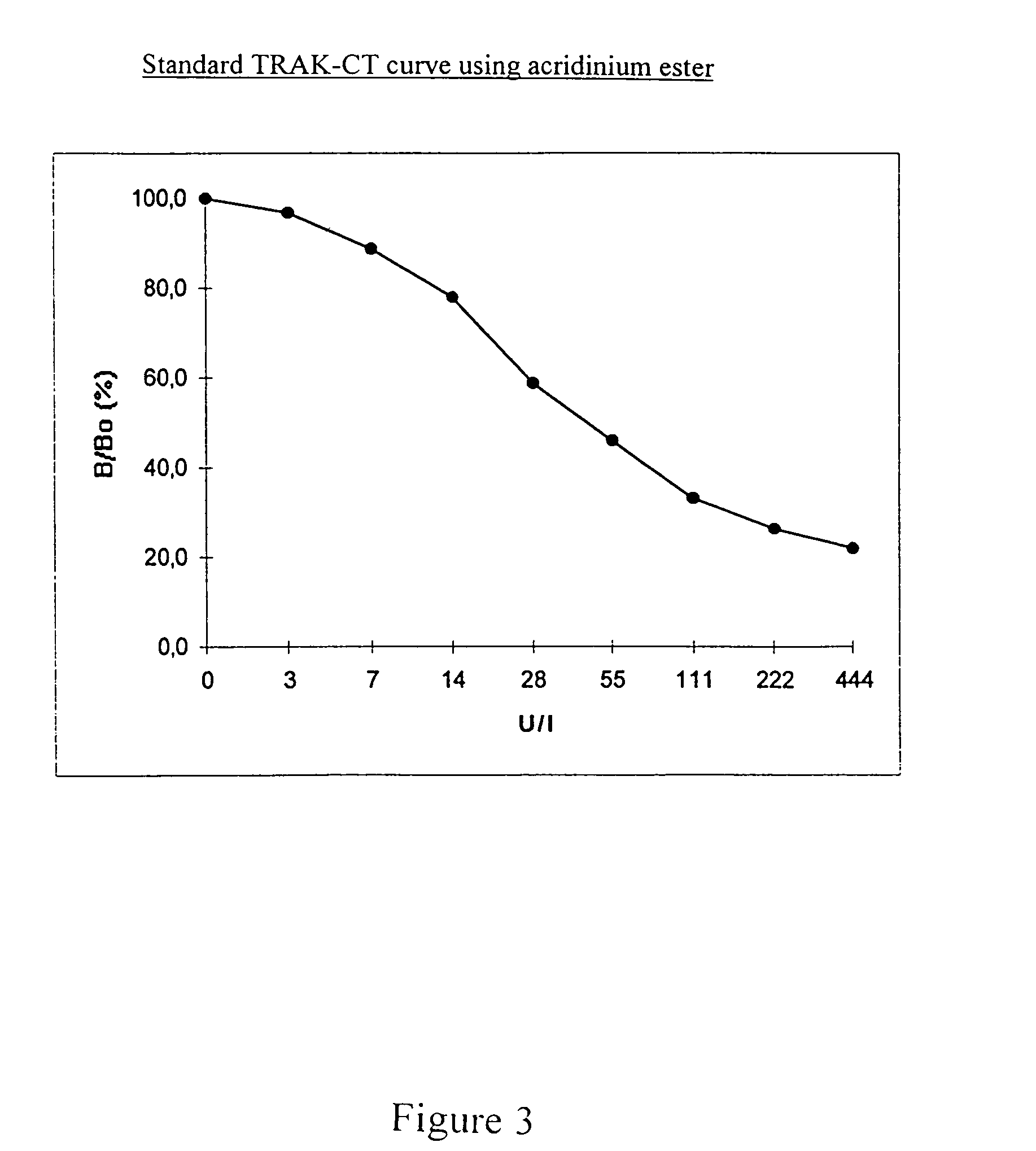Receptor binding assays and reagent kit for detecting TSH receptor autoantibodies
a technology of tsh receptor and reagent kit, which is applied in the field of improved receptor binding assays, can solve the problems of affecting the function of the receptor, affecting the clinical diagnosis, and the binding of biomolecules of peptide or protein nature, and achieves the effect of high clinical valu
- Summary
- Abstract
- Description
- Claims
- Application Information
AI Technical Summary
Benefits of technology
Problems solved by technology
Method used
Image
Examples
Embodiment Construction
[0065]The following descriptions of preparation and measurement experiments are organized as follows:[0066]1. Preparation / selection of the assay components used;[0067]2. Incubation protocols for 2 measuring methods with the use of labelled bTSH and affinity-purified rhTSHR(imm)* according to a one-step and two-step technique; and[0068]3. Results of the measurement of TSHR-auto-ab in standard samples or patients' sera with the use of test tubes according to the invention which have been coated with affinity-purified rhTSHR(imm)*, according to the principle of competition with labelled bTSH.
1. Materials
1.1 Production of a Preparation of a Crude Solubilized rhTSHR
[0069]In order to express the rhTSHR in high yield in a mammalian cell line, a human chronic leukaemia cell line was transfected in a stable manner analogously to conventional procedures with a bicistronic vector which contained the cDNA for the complete human TSH receptor and said leukaemia cell line was cultured in suspensio...
PUM
| Property | Measurement | Unit |
|---|---|---|
| Fraction | aaaaa | aaaaa |
| Fraction | aaaaa | aaaaa |
| Fraction | aaaaa | aaaaa |
Abstract
Description
Claims
Application Information
 Login to View More
Login to View More - R&D
- Intellectual Property
- Life Sciences
- Materials
- Tech Scout
- Unparalleled Data Quality
- Higher Quality Content
- 60% Fewer Hallucinations
Browse by: Latest US Patents, China's latest patents, Technical Efficacy Thesaurus, Application Domain, Technology Topic, Popular Technical Reports.
© 2025 PatSnap. All rights reserved.Legal|Privacy policy|Modern Slavery Act Transparency Statement|Sitemap|About US| Contact US: help@patsnap.com



